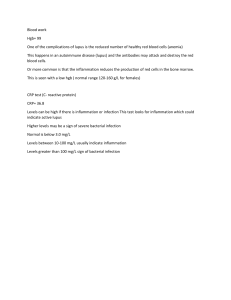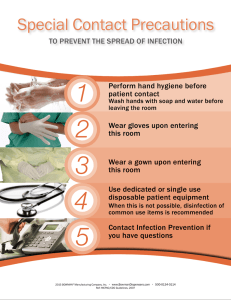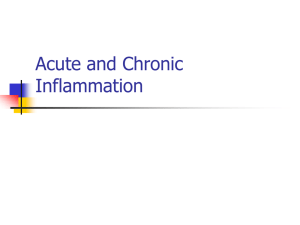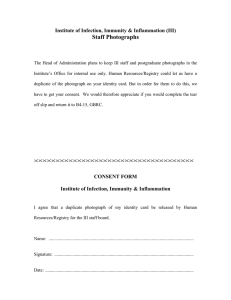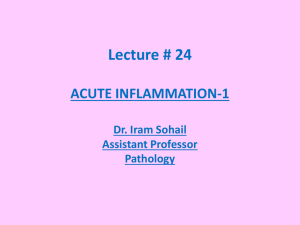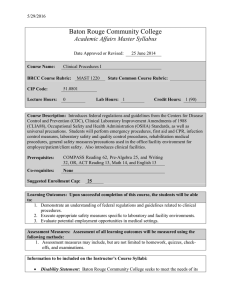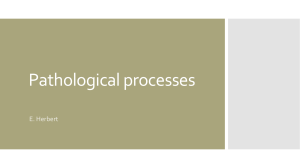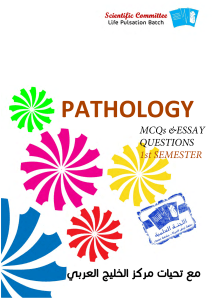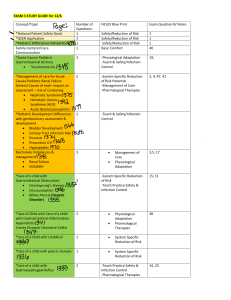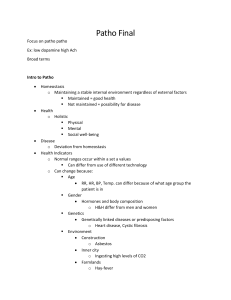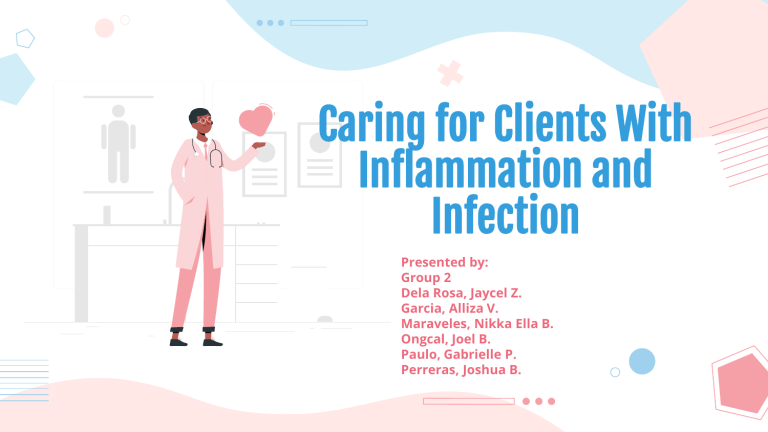
Caring for Clients With Inflammation and Infection Presented by: Group 2 Dela Rosa, Jaycel Z. Garcia, Alliza V. Maraveles, Nikka Ella B. Ongcal, Joel B. Paulo, Gabrielle P. Perreras, Joshua B. Inflammation “Nonspecific” response to an injury - Same sequence of events regardless of the cause Fluid, dissolved substances, and blood cells enter interstitial tissues of injury Purpose - Destroys the harmful agent - Limits spread to other tissue - Begins healing process Causes of Inflammation Mechanical causes Extremes of heat or cold Physical damage Immunologic responses Chemical injury Ischemic damage or trauma Microorganisms Acute Inflammation Short-term reaction of the body to any tissue damage Lasts less than 1 to 2 weeks Produces local and systemic manifestations Subsides when harmful agent is removed Local vs. Systemic vs. chronic inflammation Management of Acute Inflammation Medications: anti-inflammatory (4 groups), antibiotic, tylenol, corticosteroids Wound care: (granulation tissue) Fluid and Diet: anabolism – nutrition + circulation -well-balanced diet, ↑ carbs and protein with vitamin A,B,C,K and zinc, extra fluids Complementary: Topical ointments, cold/heat, elevate Care Plan - Inflammation Health Promotion – prevention Physiological: - Pain - Impaired Tissue Integrity - Risk for Infection Safe and Effective Care - Continuity of care – written instructions Psychosocial Chain of Infection Pathogenic Organisms Bacteria – aerobic v. anaerobic, drug resistant Mycoplasma Rickettsiae (vector – arthropod), Chlamydia Viruses – rhinovirus, latent, retrovirus, oncogenic - Two groups: Yeasts, molds Fungi - Superficial, intermediate, deep Protozoans, Helminths, Arthropods - Parasites, fecal-oral – roundworms, scabies Factors that Help Resist Infection Physical barriers - skin, mucous membranes Chemical barriers – create hostile environment - Urine, vaginal secretions Antimicrobial factors – tears, saliva, sweat Coughing, sneezing, cilia in respiratory tract (mechanical barriers) Neutrophils and macrophages Stages of the Infectious Process Initial stage - incubation period, no S/S Prodromal stage – symptoms – vague/nonspecific Acute stage - ↑ s/s↑ HR, RR, temp.; hematuria, 2nd sites Convalescent stage - pathogen destruction and tissue repair Resolution – total elimination COMPLICATIONS: Septicemia, bacteremia, septic shock Healthcare-Associated Infections Two million clients a year develop a healthcare-associated (or nosocomial) infection Increase hospital stays Costly in terms of diagnosis and treatment - UTI’s, post-op, resp., sepsis – QI - Nurses responsibility - Multi-drug resistance Age-Related Factors That Increase Risk of Infectious Disease Decreased Poor activity nutrition and risk for dehydration Chronic diseases Chronic medication use Prevention of HealthcareAssociated Infections Hand washing - Most important measure in infection control - For at least 15 seconds - Use friction - Use antimicrobial soap Clean clothing and good hygiene Current immunizations No illness or open skin lesions when caring for clients Follow infection control policies, CDC and OSHA guidelines Isolation Precautions Standard Precautions - Protect health care worker and client - Use barrier protection for direct client care and exposure to body fluid Transmission-based Precautions - Airborne Precautions - Droplet Precautions - Contact Precautions Reference: https://slideplayer.com/slide/13282414/ https://www.alamy.com/people-run-away-from-aggressive-danger-scarycoronavirus-covid19-cells-concept-vector-illustration-cartoon-man-womancouple-characters-running-in-panic-fear-virus-pathogens-catching-upbackground-image388684697.html Thank you for listening!
